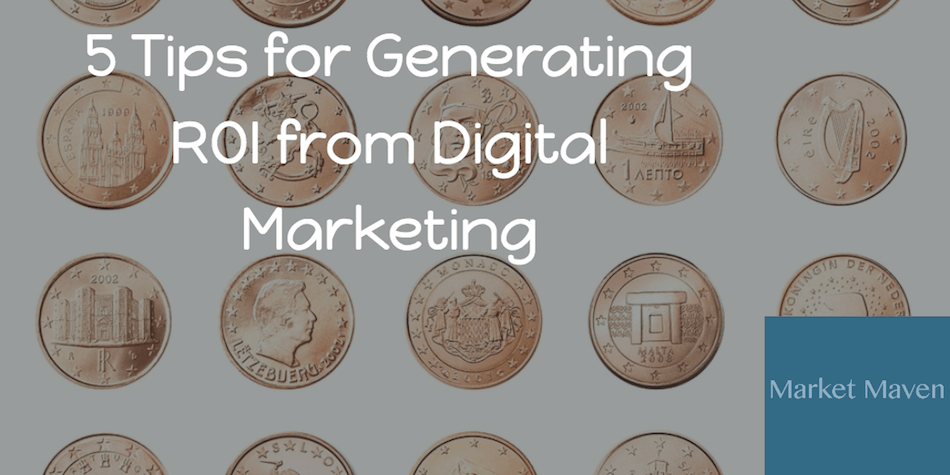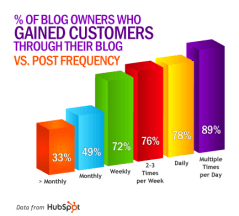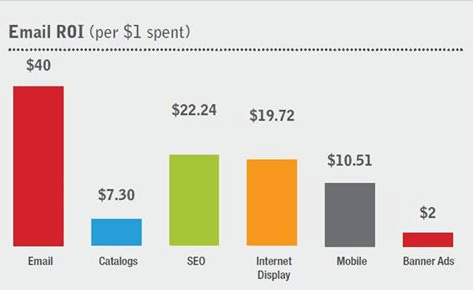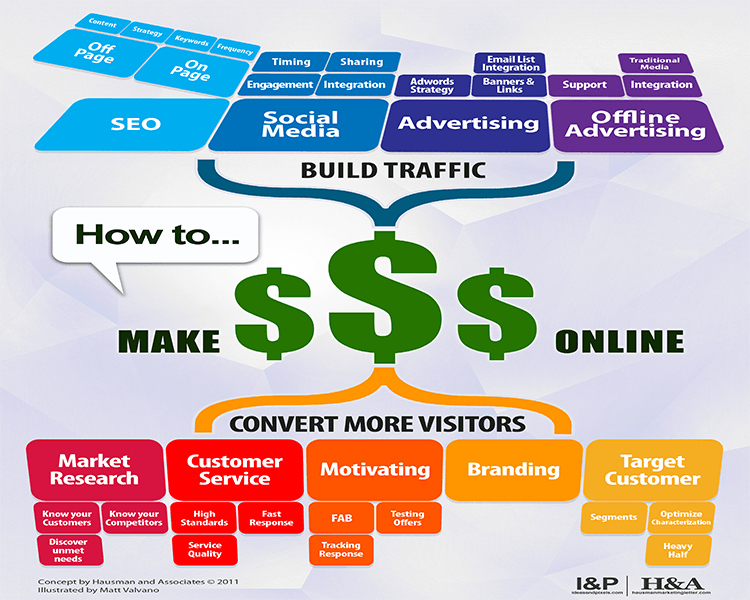
Do you feel you’re not generating enough ROI from digital marketing efforts?
Or, worse, do you not know the true ROI from digital marketing?
Then, you need these tips for generating ROI. Also, check out the list [at the end of this post] to see other great tips for getting the most return from your digital investment. Feel free to share it, embed it, vote for tips, or add your own.
Tips for generating ROI from digital marketing
1. Measure, monitor, improve
Well, first you need to know 2 things:
- Your current ROI
- Digital actions that contribute to ROI — and here you need to consider the entire scope of customer engagement with your brand — from awareness, through conversion, to loyalty (and maybe advocacy). Check out this great image showing how businesses generate ROI from their digital efforts.
Once you have this information, set up a dashboard in Google Analytics or whatever platform you use to monitor key metrics related to business performance. At a minimum, your dashboard should contain:
- visits (sessions)
- time on page
- engagement with each social platform — shares, likes, comments, RT
- page value from multichannel attribution modeling
- AOV (average order value)
- Conversion
- Cart abandonment rate
- loyalty (percentage of visits with 1, 2, 3, … prior visits)
- Page exits from landing pages
You should also create reports for these metrics based on platform (ie. organic, social platform, direct …), key demographics and geographics of interest to your brand, age, gender, and, if they’re valuable, interest categories.
Now, run your dashboard at least once a week. Periodically, say every quarter, compare performance with performance in prior quarters. Try viewing data in a longitudinal fashion to get more insights.
2. Optimize content marketing strategies
In the post-Panda world, content is king.

Here are some action items to help optimize your content marketing:
- start with a content marketing calendar to keep you on track to produce quality content on schedule. Check out the link to get some great templates to get you started.
- share content across social platforms — Buffer recommends sharing multiple times across each platform and I posted their schedule here along with some other great content marketing advice.
- Monitor the performance of your content and sharing tactics. Then, use metrics to guide creation of better content.
- Use a variety of content types — video, image, text.
- Create content suitable for each stage in the conversion process identified in the graphic above.
3. SEO
Search engine optimization helps you get the best results from your content, and I’m often amazed at how many bloggers don’t grasp how to do effective SEO or realize its importance for achieving their ROI goals. I believe this is because, before the Panda update, developers handled SEO, but now it’s the job of content marketers and others in digital marketing.
Here’s a crash course on SEO:
- Select keywords [actually keyword phrases] that match search terms for your target audience. Use Keyword Planner, a free Google tool within their advertising planform. Look for keywords, you’ll need 20+, that have high search traffic and low competition. There’s no magic formula here, just try to balance out these two criteria.
- Use keywords liberally throughout your site and in your content — just beware of keyword stuffing
- Install, or have your developer install, a good SEO plugin for your blog. I use Yoast’s SEO Plugin, but I’ve also heard good things about All in One SEO Plugin.
- Work to get authentic backlinks to your content. Use the link to get ideas on how to generate backlinks.
- Build engagement on your social networks.
- Rinse and repeat.
4. Know the facts about what works
Notice the high ROI from email marketing, although several marketing tactics seem to be missing from this graph. I suspect some, like content marketing, have such wide effects on ROI that their value couldn’t be adequately captured.
Now, you might argue that email marketing isn’t true digital marketing, but you’d be wrong.
This means your digital strategy MUST include ways to build an email list of subscribers as well as a means to energize that list with periodic emails designed for their particular stage in the buying process.
So, bite the bullet, find yourself a good email client (I use AWeber, but Constant Contact is also good), develop premium content, like ebooks, to drive subscriptions, and develop a strategy for sending unique branded content to subscribers.
5. Remember digital is still marketing
Doing everything digital perfect is great, but, remember, digital marketing is still, first and foremost, marketing and you can’t sell an overpriced, crappy product, with poor customer service. Promotion is still only ONE of the 4 P’s.
Digital marketing is but one part of the marketing ecosystem that requires constant attention to every aspect of the system identified in the infographic below.

